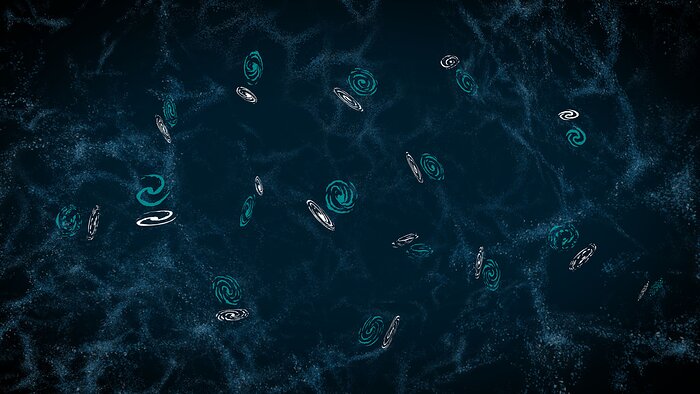The effects of weak gravitational lensing on galaxy shapes
This illustration shows the distortion of the observed shapes and positions of galaxies caused by weak gravitational lensing that is due to the Universe’s large scale structure, or ‘cosmic web’. The galaxies’ true shapes (teal) become warped as the light from them travels and bends past the galaxies and galaxy clusters of the cosmic web on its way to us. By the time the light reaches us, the galaxies’ observed shapes and positions have changed (white). The effect is highly exaggerated in this illustration, and studies of weak lensing distortions used to measure how mass is distributed in the Universe typically require measurements of millions of galaxies. Rubin Observatory’s Legacy Survey of Space and Time (LSST) will observe billions of galaxies and enable more precise weak lensing measurements than have been possible before.
Alt Text: An illustration of galaxies scattered across the cosmic web. The background is a dark blue with criss-crossing light blue filaments made of tiny dots, resembling wisps of smoke or strings of a cobweb. There are about 15 galaxies scattered around the image. Each galaxy is actually a pair of illustrations offset from each other, showing two different shapes and positions for the same galaxy. The teal version of the galaxy is generally a circular or oval shape, representing its true shape and position before its light has traveled through the Universe. The white version of the galaxy is offset slightly and elongated or distorted compared to the teal version.
Credit:RubinObs/NOIRLab/NSF/AURA/J. Pinto
About the Image
| Id: | noirlab2327a |
| Type: | Chart |
| Release date: | Oct. 11, 2023, noon |
| Related releases: | noirlab2327 |
| Size: | 2160 x 1215 px |
About the Object
| Category: | Illustrations |
